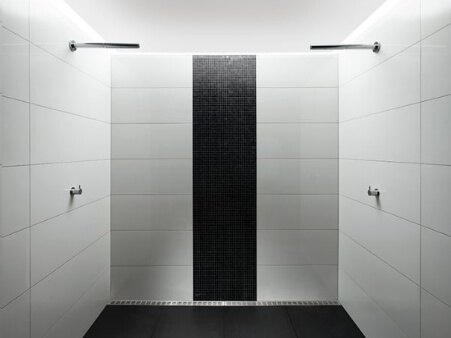Another of our series of Blogs called “Ask the Experts” and this one is by Wet Room Materials.
A wet room effortlessly provides both luxury and functionality to a residential property, be it a private dwelling or a hotel complex. However, excellence usually comes at a price a price, in the case, inadequate effort spent on the design and functionality of the wet room during planning stages, can result in a nightmare final product.
Here we look at the three most common occurrences that require remedial attention, and which present a barrier between the success and failure of a wet room installation. We don’t mention the obvious one – leaks – due to the design and build quality of our wet room systems and the installation support we provide, virtually rule out this risk.
Poor Design and Layout
The layout is critical to the success of a wet room and to the happiness and satisfaction of the user. When it has been properly considered and correctly designed, the user barely notices it. But when the reverse is true, towel rails, and other sanitary ware have the possibility of getting get soaked by the shower; this then draws attention to the functionality of the wet room original design. This reflects badly on the architect/designer, product specifier and client’s original input.
A key factor in a trouble free wet room layout is the location and reach of the shower head. Installing barriers to guide and contain the flow need not detract from the aesthetics of the space. Glass screens or doors can be installed to minimalize this problem, and come in varying heights and ranges to achieve the desired look. They form an effective control over where excess water reaches, whilst still maintaining the desirable impressions that the light and open space has on the wet room.
Drainage Capacity – Wet Room Flooding
Getting the correct capacity of the drainage system means that water is drained away efficiently. Get this wrong and users find water puddling around their feet. A wet room requires a relatively high flow rate of water and therefore the drainage must be designed to match the volume being produced.
The ideal design scenario sees the wet room at the same side of the house as the soil stack with a short pipe run required. If this is not the case, then the pipework must run between the joists and must have sufficient fall along its entire length. While a pumped drain can present a solution, it is best if standard drainage can be incorporated from the outset.
Incorrect Floor Slopes
An incorrect floor slope presents a number of complications; insufficient draining of water, creating slippery surfaces, and incorrect direction of water flow. The recommended gradient of wet room floor should be 1.5% to 2% in the direction of the drain location. That gradient is sufficiently minor so as not to be detectable to users. This gradient sufficiently drains water out of the wet room area, and is discrete enough not to cause discomfort to the user.
Floor preparation is a critical element of successful wet room design. When you recommend Wet Room Kits from Wet Room Materials, you immediately cover off a very common area of risk.




